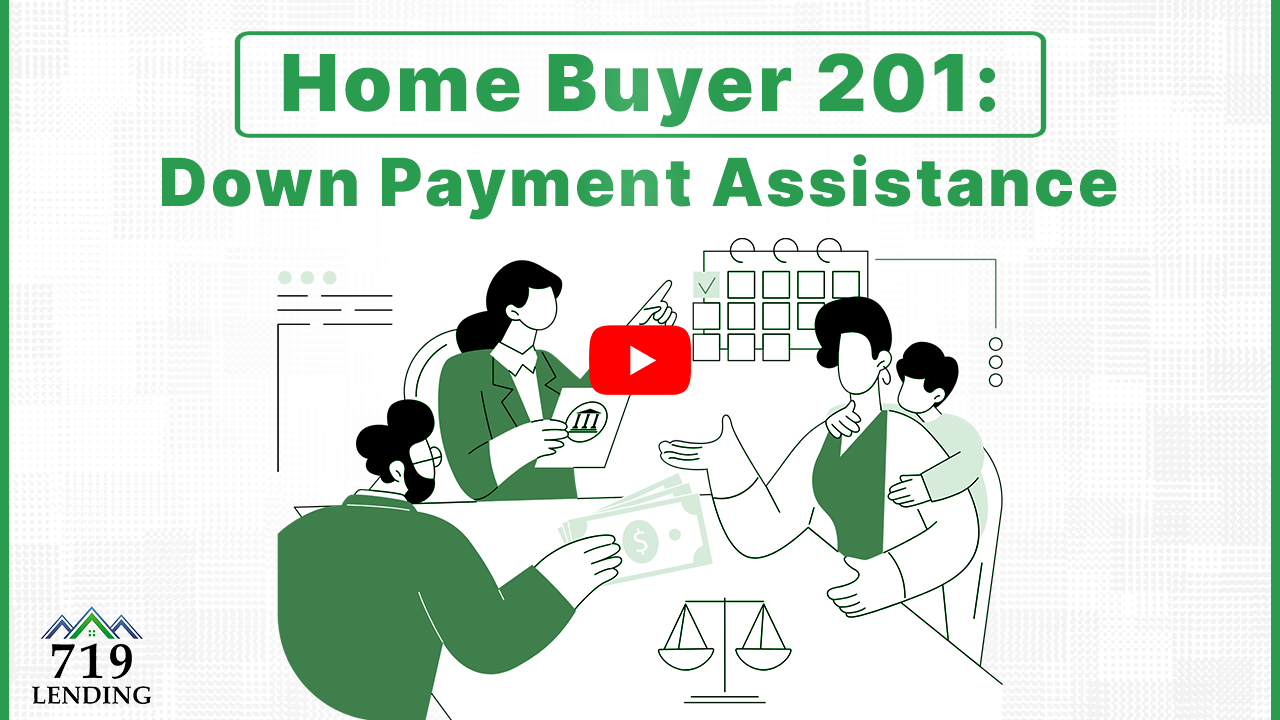6 minute lesson Lesson Summary Importance of timely document submission for your loan Types of…
Homebuyer 101: VA Funding Fee
Lesson Summary
-
The VA funding fee is a fee collected and added to the loan amount when the loan funds.
-
It ensures the loan for the lender in case of default.
-
The fee varies depending on different scenarios:
-
If you have a recognized disability through the VA, the fee is waived completely.
-
For first-time users without a recognized disability, the fee is 2.15% of the loan amount.
-
For subsequent uses, the fee is 3.3% of the loan amount.
-
-
Making a down payment of at least 5% can significantly lower the fee:
-
A 5% down payment lowers the fee to 1.5%.
-
A 10% down payment lowers the fee to 1.25%.
-
-
It is recommended to make a down payment if possible, as it can save money in the long run.
Navigating the homebuying process can seem daunting, especially with additional fees that might not be immediately apparent.
Enter the VA funding fee: a critical cost for many military service members seeking to utilize their VA loan benefit. While it’s an essential component of the VA loan process, it operates under a set of rules that, once understood, can reveal opportunities for savings. This one-time fee, geared towards protecting the lender, shifts based on various factors, such as disability status and down payment size, directly impacting the overall loan amount.
Understanding the VA Funding Fee
The VA Funding Fee serves as a safeguard for lenders, cushioning them against losses should a borrower default. It’s a pivotal piece of the VA loan puzzle, directly affecting the loan’s balance.
In essence, the funding fee’s percentage hinges on several conditions, including whether it’s your first VA loan usage and if you’re contributing a down payment. Recognize that this fee is folded into the loan, subtly increasing the amount you borrow.
Veterans with service-connected disabilities may find relief in knowing that they are exempt from this fee. It’s a significant benefit that underscores our nation’s gratitude for their service.
Purpose of the VA Funding Fee
The VA Funding Fee ensures lenders are shielded against defaults, integral to the long-term sustainability of VA loans.
The funding fee supports the VA Home Loan Guaranty Program, keeping it no-cost for taxpayers.
By mitigating lender risk with this fee, the VA loan remains viable, safeguarding the program’s future, hence benefiting current and future veterans.
For borrowers, although wrapped into the loan, understanding its structure—driven by factors like disability status and down payment—can lead to considerable savings over the loan’s life.
Calculating Your Fee Amount
The fee hinges on specific factors.
For first-time VA loan users without a service-connected disability, the fee is 2.15% of the loan amount. This translates to an additional $2,150 per $100,000 borrowed, incrementally increasing your loan balance.
Subsequent use incurs a higher fee.
If you’re not on your first VA loan, the percentage escalates to 3.3%. That’s an extra $3,300 for each $100,000 of loan value.
Down payments reduce your fee.
Down payments make a substantial difference – 5% down lowers the fee to 1.5%, while a 10% down payment brings it down further to 1.25%.
Consider future savings with a down payment.
With a down payment, long-term savings accrue, making it a financially sound move if manageable within your budget. Beyond 2023, these percentages may adjust, so always verify current rates before proceeding.
Disability Exception and Savings
Eligible veterans with service-connected disabilities may receive a significant benefit when securing a VA loan.
- Full Waiver: Veterans recognized with a service-related disability by the VA are exempt from the funding fee entirely.
- Spouses: This exemption also extends to the surviving spouses of veterans who died in service or from a service-connected disability.
Opting for a down payment can lead to considerable fee reductions for those without disability benefits.
In the absence of a disability exemption, higher down payments not only decrease the funding fee but also lead to long-term cost savings.
First-Time vs. Subsequent Use Rates
First-time users of VA loans experience a more favorable funding fee at 2.15% of the loan amount, a modest sum considering the substantial value VA loans offer. Conversely, for repeat users not putting any money down, the fee jumps to a heftier 3.3%—a significant increment reinforcing the benefit of first-time utilization.
Subsequent uses of VA financing reflect a higher cost of commitment; thus, strategizing financial planning to accommodate down payments can alleviate the effect of these escalated rates and its impact on your mortgage balance.
Lower Fees for First-Time Borrowers
First-time VA loan borrowers enjoy a uniquely advantageous funding fee rate. This initial hospitality sets a welcoming tone for those stepping into the world of home ownership.
Significantly, the first-time borrower’s fee of 2.15% for zero down is designed to facilitate entry into the housing market. With the VA loan program aimed at helping veterans achieve homeownership, this reduced funding fee underscores the program’s commitment. Consequently, while repeat users incur increased fees, these initial rates are tailored to recognize and reward new entrants to the VA lending sphere.
The cost advantages extend beyond the lower fee percentage. First-time users, by paying a more modest fee, also minimize the amount being financed, which translates to lower lifetime interest costs. Essentially, the reduced funding fee is just one part of a broader financial advantage offered to first-time VA loan recipients.
Strategic financial moves, such as considering a down payment even as a first-time borrower, can further decrease the funding fee. For instance, a mere 5% down drops the fee to 1.5%, while a 10% down payment reduces it to an even lower 1.25%. These savvy decisions compound savings over time, solidifying the case for advanced planning and potentially making a substantial difference in overall loan affordability.
Increased Fees for Repeat Use
Subsequent utilization of the VA loan benefit comes with a cost. The funding fee increases, reflecting the repeated use of this valuable resource.
For veterans who have previously capitalized on the VA loan program, increased funding fees serve as a measure to sustain the program’s health. Regular, repeated access to the benefit implies greater reliance and therefore a larger fee—3.3% of the loan amount. This heightened fee ensures the continuance of the program, securing its availability for future veterans.
Despite the uptick for repeat use, the funding fee remains a crucial part of the loan’s structure. It preserves the no-down-payment option and does not necessitate private mortgage insurance (PMI). Even with successive uses, the financial burden is considerably less than conventional loans with similar terms.
Interestingly, even for those facing higher fees due to multiple uses, down payments significantly mitigate the impact. Dropping a 5% or 10% down payment reduces the fee to 1.5% and 1.25%, respectively. Thus, if financially feasible, committing funds upfront can notably trim down the additional costs incurred with repeated use of VA loans.
Impact of Down Payments
In the realm of VA loans, down payments are not merely a transactional element—they are strategic financial leverages. By allocating as little as 5% of the purchase price upfront, veterans can effectively reduce their VA funding fee, enhancing the long-term affordability of their home purchase. A 10% down payment further carves down the funding fee, underscoring the cumulative value of upfront capital investment. Such down payments can result in substantial savings over the loan’s lifespan, reinforcing the advisability of utilizing available funds to lower the overall financial commitment initially, if such resources are within reach.
Reducing Fees with a 5% Down Payment
Navigating the financial landscape of VA loans can yield significant savings. For starters, let’s dissect the direct benefits of a 5% down payment. This initial infusion of capital works two-fold: it lowers the VA funding fee and simultaneously reduces your loan’s balance.
A more subtle advantage lies in the long-term interest savings. Because your loan amount is decreased with a down payment, less interest accrues over time.
Furthermore, making this down payment signals to lenders your commitment, potentially improving your loan terms. The upfront payment acts as a risk mitigator, leading to valuable financial perks like lower interest rates.
The actual mechanics of this reduction are straightforward. Introducing 5% of the home’s value into the equation trims your VA funding fee to 1.5%. With this adjustment, the financial burden on veterans taking the VA loan route is notably eased.
Imagine you’re purchasing a home priced at $250,000. Here, a 5% down payment lifts a portion of the mortgage weight off your shoulders, yielding a direct reduction in funding fees translating to thousands in savings.
Veterans, keen to optimize their home investment, should weigh this 5% gesture. It’s a strategic move that not only accords immediate reductions in fees but also builds a stronger equity position from day one.
Minimum Fee with a 10% Down Payment
Opting for a 10% down payment can significantly lower the VA funding fee. This reduction is not just token—it’s substantial.
Providing a 10% down payment effectively minimizes the VA funding fee to a mere 1.25% of the loan amount. This is the lowest possible fee attainable without a disability waiver.
In financial terms, for a loan of $200,000, a 1.25% funding fee equates to $2,500—far less than without any down payment. The savings are clear and quantifiable, providing immediate and long-term financial relief.
This upfront investment also has cascading benefits, like potentially lower monthly payments and less interest over the life of the loan. It’s an option that merits serious consideration for veteran homebuyers.
Remember, this smart financial strategy not only reduces upfront costs but also enhances your home’s equity. It’s a win-win situation for savvy veterans willing to invest upfront.
Strategic Use of Down Payments
Smart utilization of down payments when securing a VA loan can alter the financial landscape of your home purchase considerably. A strategic down payment is more than just upfront cash—it’s a tool for financial leverage. By contributing at least 5%, you activate a tiered reduction in the VA funding fee, making each percentage point saved significantly worthwhile. This initial investment diminishes the overall loan balance and the associated fee, crafting a more manageable financial obligation and fostering a resilient equity position in your property from the outset. Such a calculated approach to down payments can yield tangible savings, making it a prudent move for veterans mapping out their homeownership journey.
Assessing Financial Benefits
The VA funding fee, while obligatory, offers veterans considerable long-term benefits. By ensuring the lender is protected, it facilitates the continuation of this advantageous loan program.
With no down payment requirement for a VA loan, veterans often relish the opportunity to acquire property with minimal initial financial pressure. However, those able to invest in a down payment will see a tangible drop in their funding fee. This decrease results in less money borrowed and, thus, lower overall loan costs. Moreover, a lowered fee significantly enhances the veteran’s equity in the property, establishing a stronger financial foundation.
In essence, the funding fee acts as a guardian of the loan program’s sustainability. By contributing to the insurance pool, veterans help secure this benefit for future borrowers. While it might seem like an added cost, this fee underwrites the risk, allowing lenders to confidently provide these loans without requiring private mortgage insurance, a savings veterans ultimately enjoy.
Furthermore, when considering the lifetime of a mortgage, the funding fee’s impact on monthly payments is modest. However, the option to roll the fee into the loan balance eases immediate financial burden, while a down payment to reduce the fee offers substantial interest savings. For veterans with the capital, this presents an opportunity to invest in their homes and future financial stability concurrently, making it a strategic consideration for any home buying plan.
Recommendations for Veterans Without Disabilities
Navigating the VA funding fee without a disability exemption can be cost-saving with strategic planning.
- Conserve Cash for a Down Payment: Accumulate savings to make a down payment, reducing the overall funding fee.
- Consider the Long-Term Impact: Weigh the benefits of a lower fee against the potential interest savings over the life of the loan.
- Evaluate Financial Readiness: Assess your financial stability to ensure that a down payment won’t deplete essential reserves.
Strategically utilizing your savings can significantly lower your funding fee and long-term loan costs.
Remember, each percentage point saved on the funding fee translates into tangible, long-term financial benefits.



